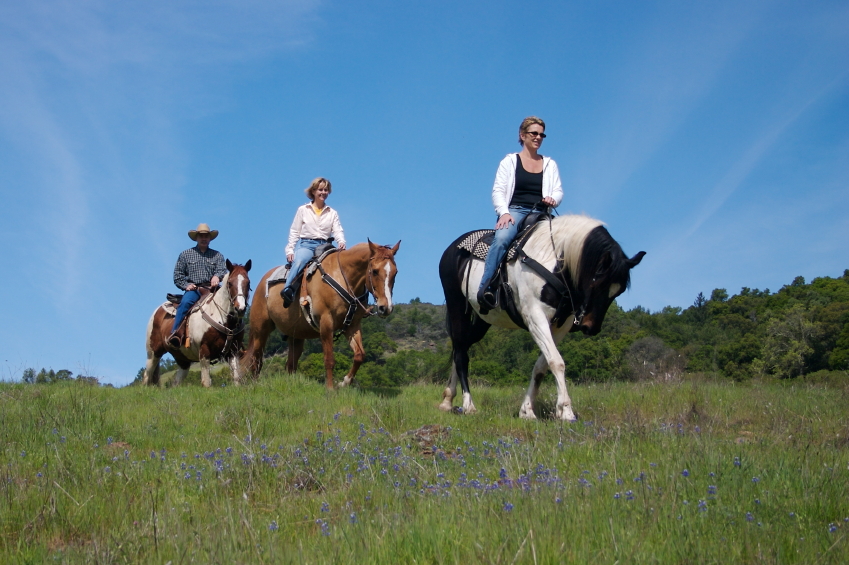In our valley the vast majority of our trails are shared-use paths. This provides all of us with more options for our outings and lots of chances to share the trails with a smile and a hello. We are fortunate to live and play in a place where, in most circumstances, everyone gets along well.
One of my duties as the Wood River Valley Trail Coordinator for the Blaine County Recreation District is to help educate the public about the safe use of our trails. To further such conversations I’d like to discuss some trail etiquette issues specific to how best to interact with equestrians out on the trail. I’ll cover other trail etiquette topics in future blog posts.
Be mindful that horses have poor eyesight, are naturally skittish, and can cause serious injury when startled. Horses instinctively flee in the face of danger, and they are notoriously poor judges of what constitutes a threat. The slightest change in their surroundings may trigger a flight response.
Always talk to horseback riders; ask them if their horses are easily spooked and ask for instructions on how they would prefer you to facilitate a passing. Your voice will be helpful to the horse in recognizing you as a human. Be patient as equestrians may require some time to calm their mounts and find a place where a pass can be negotiated.
When approaching from behind, do not ride up quickly on stock. Stop well in back of the riders and announce your presence loudly, but calmly so as not to spook the horses.
If you meet horses on the trail, dismount and take off your helmet if you are on a bike (you’ll look less like a flesh eating alien to the horses). Move away from the trail to the downhill side as horses may feel that an attack is imminent if you are above them. Never hide or move behind a tree or rock in and attempt to allow equestrians an unburdened passing. When the horses do detect your presence, which is almost a certainty, they will likely bolt.
The right-of way rule is that bikers yield to hikers, and both yield to horsemen. Although this is considered a trail rule, common courtesy and common sense should prevail and apply on the trails. Generally speaking, uphill traffic has the right-of-way, regardless if it’s a hiker, biker, or equestrian. Downhill traffic should yield by waiting at the top of the climb, or at the first safe place to stop.
Keep a keen eye ahead and look for others approaching from the opposite direction. Enter blind corners slowly and announce your presence with your voice or a bell. Try to anticipate where unexpected meetings might take place, and slow down.
As a horse rider it is your responsibility to manage your animals on the trail. Don’t bring “green” stock to high-traffic or multi-use trails. Make sure that your horse is ready to trail ride by desensitizing your horse in advance. Don’t clean out your horse trailer at the trailhead, and be mindful to avoid riding on wet and muddy trails. Please don’t cut switchbacks or take shortcuts, as doing so is hard on the trails and the people who maintain them.
Thanks for practicing good trail etiquette and for helping us all enjoy great rides, hikes, and runs.



